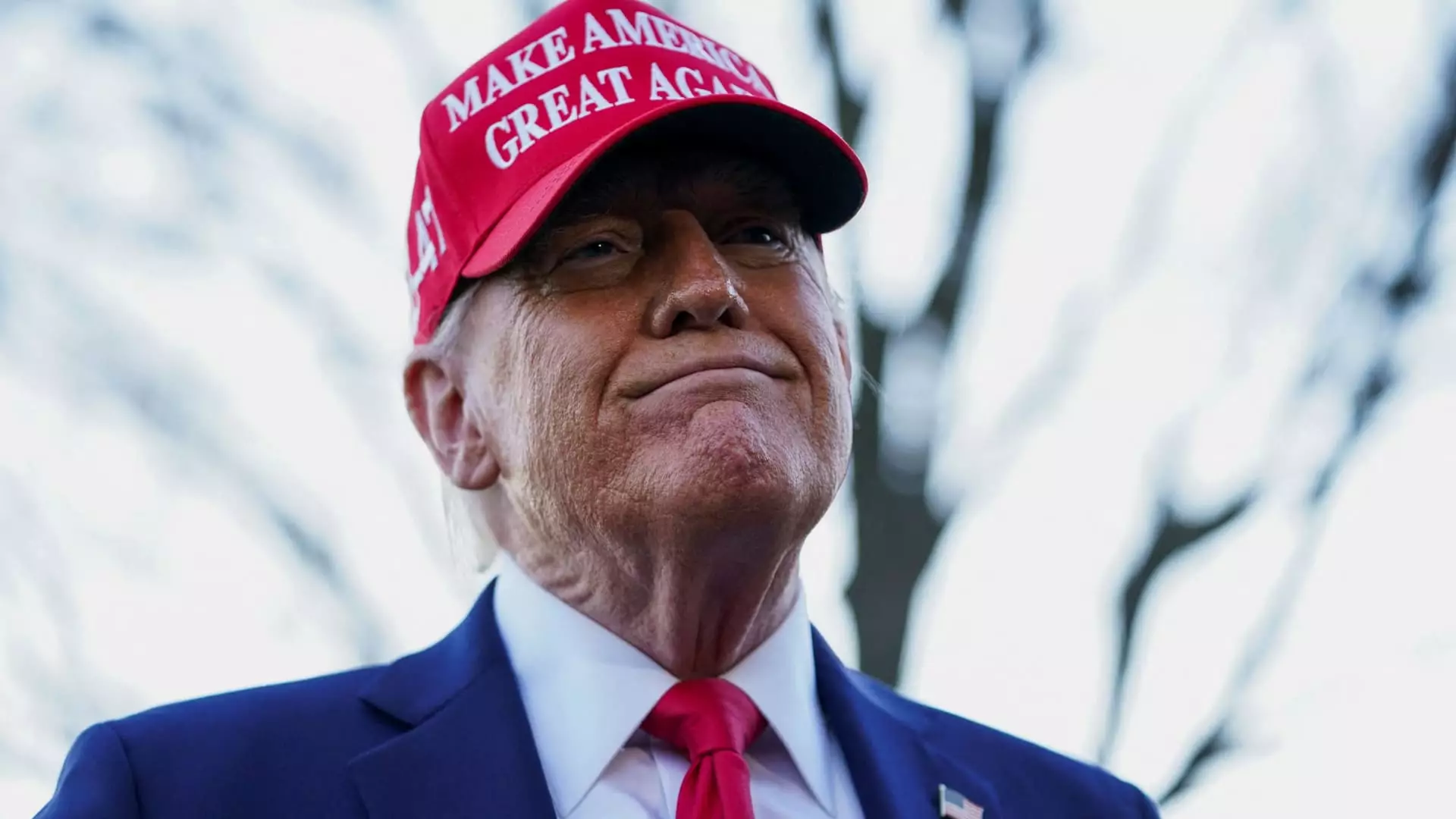The U.S. economy stands at a precipice as President Donald Trump exercises unprecedented economic measures through hefty tariffs on imports from key trading partners. The implications of this policy shift on importers and consumers are grave and immediate. By imposing a staggering 25% tariff on imports from Canada and Mexico, and an additional 10% on Chinese goods, the U.S. economy is about to feel the ramifications of these measures like an unleashed hurricane. This isn’t just an experiment in protectionism; it represents a critical juncture in how America engages with global trade.
To grasp the urgency of this tariff imposition, one must recognize that trade with Canada, Mexico, and China constituted approximately 40% of America’s overall goods commerce last year. Such an extensive reliance on these nations heightens the stakes of the tariffs. For example, consider the simple act of importing a commodity like limes from Mexico: a $100,000 order will now incur an additional $25,000 cost just from tariffs. This is no small inconvenience, but a real economic shock that will reverberate through the supply chain, adversely affecting everyone from importers to average consumers.
Why is this significant? Because these costs will inevitably be passed on to the consumer. Retail giants like Target have already warned of imminent price hikes on essential goods such as fruits and vegetables. The financial burden lands squarely on the shoulders of everyday Americans, already grappling with inflation and a fluctuating economy. With such swift changes, the idea of “light switch” tariffs could create chaos rather than stability.
The Trump administration’s invocation of the International Emergency Economic Powers Act (IEEPA) to support these tariffs is equally concerning. Originally intended for emergency sanctions against foreign adversaries, this law’s misuse raises questions about the extent of presidential authority. By categorizing non-threatening issues such as immigration and drug trade as “unusual and extraordinary” threats, the administration risks normalizing a dangerous precedent, one characterized by economic coercion rather than cooperative negotiation.
Critics highlight that this trend invites legal challenges and increased scrutiny on executive overreach. When presidents begin to reinterpret laws for purposes far beyond their original intention, a slippery slope emerges that may undermine not just trade policy but the very fabric of governmental checks and balances.
Trump’s tariff strategy also threatens significant disruption in the burgeoning e-commerce sector. The administration’s plan to impose tariffs on “de minimis” shipments—international packages valued at $800 or less—could create turmoil for many U.S. consumers accustomed to quick access to goods from abroad. Retailers like Shein and Temu that rely on this importation loophole may find themselves in jeopardy, complicating the supply chain for fast-moving consumer goods.
Not only will this burden smaller distributors with new tariffs, but the logistical nightmare of retrofitting an existing system to capture these revenues sets the stage for inefficiency and unanticipated chaos. With millions of packages flowing into the U.S. daily, the current customs operation is ill-prepared for such a wave of tariff collection, risking delays, increased costs, and even cancellations of shipments.
What does all of this mean for the average American household? According to estimations by the Tax Policy Center, households could face an additional $930 annual expenditure by 2026 due to these tariffs on essential goods. For many families already balancing tight budgets, this extra financial burden could exacerbate economic vulnerability, pushing households further into financial distress.
Consumer sentiment is likely to shift sharply in the face of rising prices and uncertainty. With personal finances under siege, the perception of the government as a facilitator of prosperity will be challenged. If this pattern persists, the administration’s efforts to stimulate the economy may backfire spectacularly.
As the situation unfolds, it remains unclear when—or even if—an effective system for tariff collection on low-value shipments will materialize. The failure to establish a sound infrastructure for collecting tariffs on millions of small packages may lead to unprecedented chaos, straining consumer trust along with supply chains. Many experts emphasize the urgent need for the federal government to bolster its customs workforce and adapt to these new realities.
We find ourselves at a crucial crossroads driven by Trump’s contentious economic strategy, with potential repercussions that could reshape the consumer landscape. If the administration fails to navigate these tumultuous waters with a coherent strategy, the American consumer market could face a devastating collapse. As the stakes rise, so does the urgency to seriously reconsider the viability of such aggressive economic policies before we recklessly plunge into a more isolated and economically strained reality.

